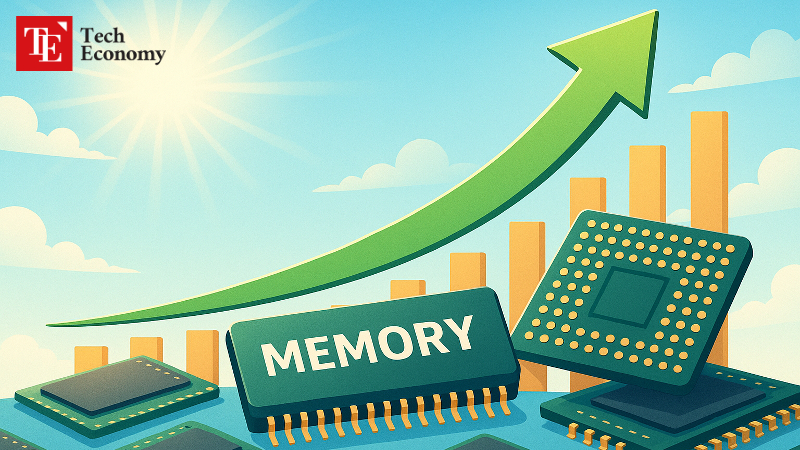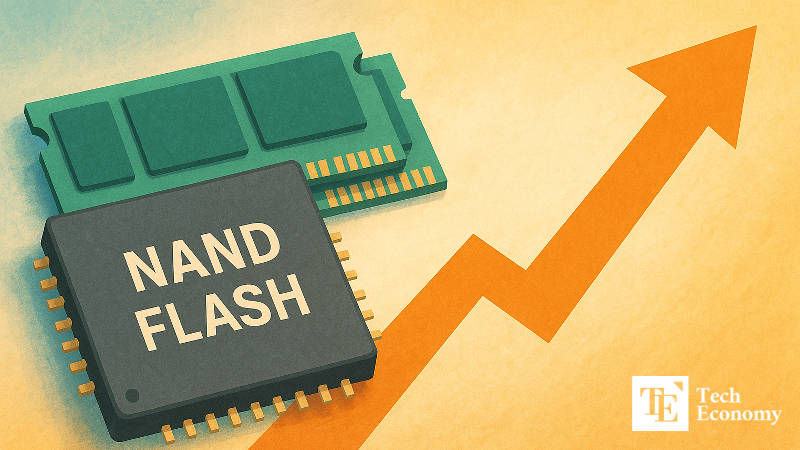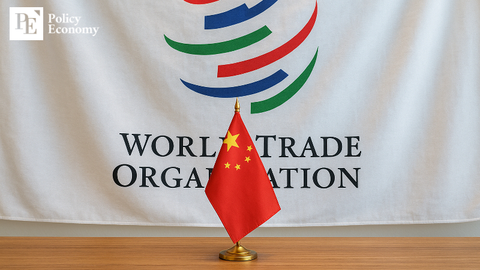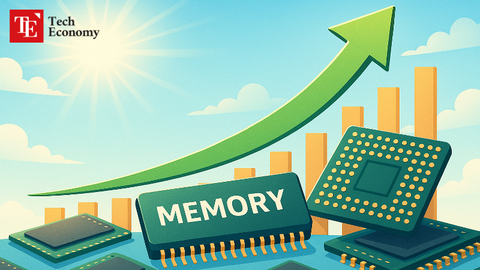From DRAM Shortages to NAND Revival, AI Demand Drives Multi-Year Memory Upswing
Input
Modified
Micron, SanDisk, and Samsung Raise Memory Chip Prices in Tandem Surging Market Demand Dries Up Supply of Standard DRAM NAND Flash Sector, Once Struggling With Oversupply, Enters Recovery Phase

The outlook for the memory semiconductor sector is showing clear signs of improvement. As major global companies accelerate investments in artificial intelligence (AI) infrastructure, demand for memory chips has surged even as supply has tightened, driving prices higher. Analysts now say the industry is entering a “super cycle” that could sustain growth for the next two to three years.
Memory Semiconductor Market Enters Boom Phase
According to industry sources and international reports on the 23rd, Samsung Electronics has informed major clients that it will raise contract prices for DRAM by 15–30% per category in the fourth quarter, while NAND flash prices will increase by 5–10%. This follows similar hikes announced earlier this month by U.S. rivals Micron and SanDisk, with Samsung—the world’s top memory chipmaker—now joining the wave of price increases.
The synchronized move reflects a rapid recovery in demand. U.S. tech giants such as Google and Microsoft, along with Chinese firms including Tencent and Baidu, are ramping up AI infrastructure investments, driving orders for high-bandwidth memory (HBM), graphics DRAM (GDDR7), and low-power DRAM (LPDDR5) at Samsung and SK Hynix. To meet the surge, Samsung is increasing wafer input, while SK Hynix is also believed to be expanding capacity.
Wall Street expects the supply shortage to persist into next year. U.S. investment firm Susquehanna noted that “the industry is prioritizing margin improvement over market share expansion,” forecasting that commodity DRAM prices will also rise in 2026. Even Morgan Stanley, long bearish on the memory cycle, revised its outlook, stating: “Cycle indicators suggest a peak around 2027, with shortages now evident across the sector as industry dynamics shift.”
Declining Supply of Commodity DRAM
The growing shortage in the memory market is closely tied to the industry’s heavy investment in high-bandwidth memory (HBM). Samsung Electronics, SK Hynix, and Micron have all been expanding DRAM production lines, but much of that new capacity is being allocated to HBM. KB Securities analyst Kim Dong-won explained: “While demand for commodity DRAM, particularly for servers, has exceeded expectations, the three major DRAM makers are focused on scaling up HBM rather than adding new DRAM capacity. Beyond process conversions, no additional expansions are planned, which is tightening supply and points to a shortage in next year’s DRAM market.”
China’s shift in production priorities has also contributed to the trend. In May, reports indicated that CXMT, China’s largest memory producer, would phase out DDR4 server and PC chips by mid-2025. The company announced plans to discontinue production this year and convert more than 60% of its output to DDR5 by year’s end—part of Beijing’s broader strategy to strengthen semiconductor self-reliance in response to U.S. restrictions.
The retrenchment initiated by CXMT is now spreading across China’s memory sector. Last month, investment outlet Ainvest reported that Chinese semiconductor firms are increasingly reducing commodity DRAM production to focus resources on advanced AI chips. The shift reflects China’s push to align with the global trend, as big tech companies such as Meta and Amazon expand their in-house AI chip strategies and traditional chipmakers channel more investment into HBM and AI-optimized memory solutions.

AI Boom Drives NAND Demand
The NAND market, long weighed down by oversupply, has seen its fortunes reverse. After peaking in 2021, the sector slipped into a glut starting in 2022, hurt by weaker smartphone and PC demand and a more fragmented supply base than DRAM. Unlike DRAM, which is dominated by three players, NAND has five major suppliers: Samsung Electronics (32.9% share as of Q2), SK Hynix & Solidigm (21.1%), Kioxia (13.5%), Micron (13.3%), and SanDisk (12%).
The turning point has come with soaring demand from AI-driven data centers. Traditionally, hard disk drives (HDDs) were used for storage, but cloud operators are now rapidly shifting to NAND-based solid-state drives (SSDs), which offer much faster read and write speeds. Morgan Stanley forecasts that NAND supply could fall short of demand by as much as 8% next year, with enterprise SSDs (eSSDs) facing the most acute shortages.
Looking further ahead, next-generation high-bandwidth NAND (HBF) is expected to add fresh momentum to demand. Like HBM, which stacks DRAM vertically, HBF vertically layers NAND to create high-performance chips. When paired with HBM, HBF can significantly boost the overall performance of AI accelerators. Industry projections suggest HBF could begin seeing widespread adoption in AI accelerators as early as 2030.






















Comment